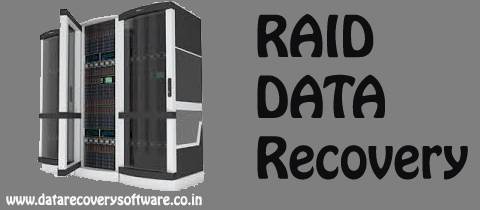RAID Data Recovery Services
RAID is a simple procedure that includes linking up or logically putting up multiple disks together in a single array. RAID is an abbreviation for Redundant Array of Inexpensive Disks.
There has been a lot of questions and confusion regarding RAID amongst all of our customers. However, one must know that RAID brings forward reliability similar to that of an expensive disk.
The process of putting a few disks together will give you the speed of an expensive disk but the speed or the reliability depends on the type of RAID you choose to use.
Even with such incredible reliability, you can still lose your RAID data anytime, anywhere. Moreover, the hard drive has a failure possibility of 2.5%.
Hard drive failure is not a new thing, the high chances of a hard drive failure are proven by several reports or experts.
Spinning disk, mechanical hard drives, or Hard Disk Disks (HDDs) are typically considered to put up together as RAID.
However, SSDs are commonly chosen when you want the speed, and performance is supposed to be your priority.
As there are numerous disks linked together, losing a single disk in a few types can lead to complete data loss which makes RAID a little risky to use.
In some situations, you can recover the data and run an additional drive to have access to any data with ease.
In types of RAID like RAID 5 and RAID 6, you can have data restored and face no loss even if you lose one or two disks.
People use RAID for improved reading and write performance along with commendable speed, performance, and reliability.
You don’t need to worry about losing your RAID data nowadays; we are here to help you. Let’s look into a few brief details on RAID data recovery.
In the process of data recovery, we strive to recover the lost or unintentionally deleted data. Data can be lost from a hard drive because of numerous factors.
Now, when we talk about RAID, we must know that it consists of a decent number of hard drives.
Therefore, the ratio of data loss is highly possible specifically when compared to a simple hard drive.
On the contrary, there are several methods that are developed and introduced every year for successful RAID data recovery.
In case, you have faced a situation that includes losing RAID data or a hard drive failure, then considering looking out for the following signs:
a) Sudden disappearance of data or loss within the system.
b) Sometimes, the RAID system gives unusual or strange sounds that are also supposed to be a valid indicator of a hard drive failure.
c) Problem in data circulation at different ends of the system.
d) Failure in any single hard drive.
e) Presence of viruses in the system.
If we talk more about the RAID data recovery then it is a known fact that the recovery of any data can be difficult but not impossible.
However, efficient and successful data recovery is possible only by RAID data recovery experts or professionals.
In most cases, experts or professionals are considered to be hired permanently in popular organizations where RAID implementation is prominent and a little more common than usual.
Experts are hired as these organizations cannot afford the risk of handing over the data recovery chances to untrained or unprofessional individuals.

Raid Data Recovery
There are different types of RAID data recovery methods used by organizations or people. Some of the common types of RAID recovery processes used are mentioned below:
Raid Recovery-1: Advanced data recovery techniques to recover lost data, when both the data drive and mirrored drive of RAID-1.
Raid Recovery-5/5EE/50/51: Innovative techniques to recover precious data by resolving data and parity movement from severely complex RAID levels, Raid-5/5EE/50/51.
RAID-6: Careful observation and analysis to recover data from mission-critical applications, implemented with RAID 6, containing dual-parity block-level stripping.
RAID ADG: A systematic approach for maximum possible recovery from the troubled RAID ADG array, affirming your motto of zero-tolerance against data loss.
Email Recovery: MS Exchange Server: Safe as yet powerful mail recovery techniques to recover inaccessible Exchange mailboxes configured on any troubled RAID 0+1 or RAID 5.
Lotus Domino Server: Innovative techniques to recover Lotus Domino email databases and other essential segments, spreading across a RAID 1 and RAID 1/10/5.
Zarafa Mail Server: RAID Recovery techniques to recover lost emails of Linux-based Zarafa mail server, hosted on the complex configuration of RAID 1 and RAID 10/5.
Zibra Mail Server: Maximum possible recovery of your mailboxes in CentOS-based Zimbra email server with RAID 1 or RAID 5.
Database Recovery:
Oracle: Stellar recovers the data of your Oracle RDBMS hosted on any host-based (software-based) or hardware-based RAID implementation.
MS SQL Server: Recover all lost, inaccessible data of your SQL Server database, configured on any complex RAID 5 or RAID 1+0.
MS SharePoint: Is your SharePoint data inaccessible because of the troubled RAID array? Stellar RAID Data Recovery can recover them all.
MySQL: Safe and verified recovery techniques to recover your business-critical data in the MySQL database stuck due to RAID controller failure.
Server Recovery:
NAS: You have configured your NAS with a complex RAID array and now it has failed to make your entire NAS box inaccessible.
SAN: With Stellar you can recover all your business-critical data, stuck in the SAN storage box due to damaged RAID configuration.
Now, having basic information on RAID and its recovery processes, I’m sure you can make better decisions. For further information and professional help or advice, contact us right away!
You can reach out to us at - 09248804504
Email us: contact@datarecoverysoftware.